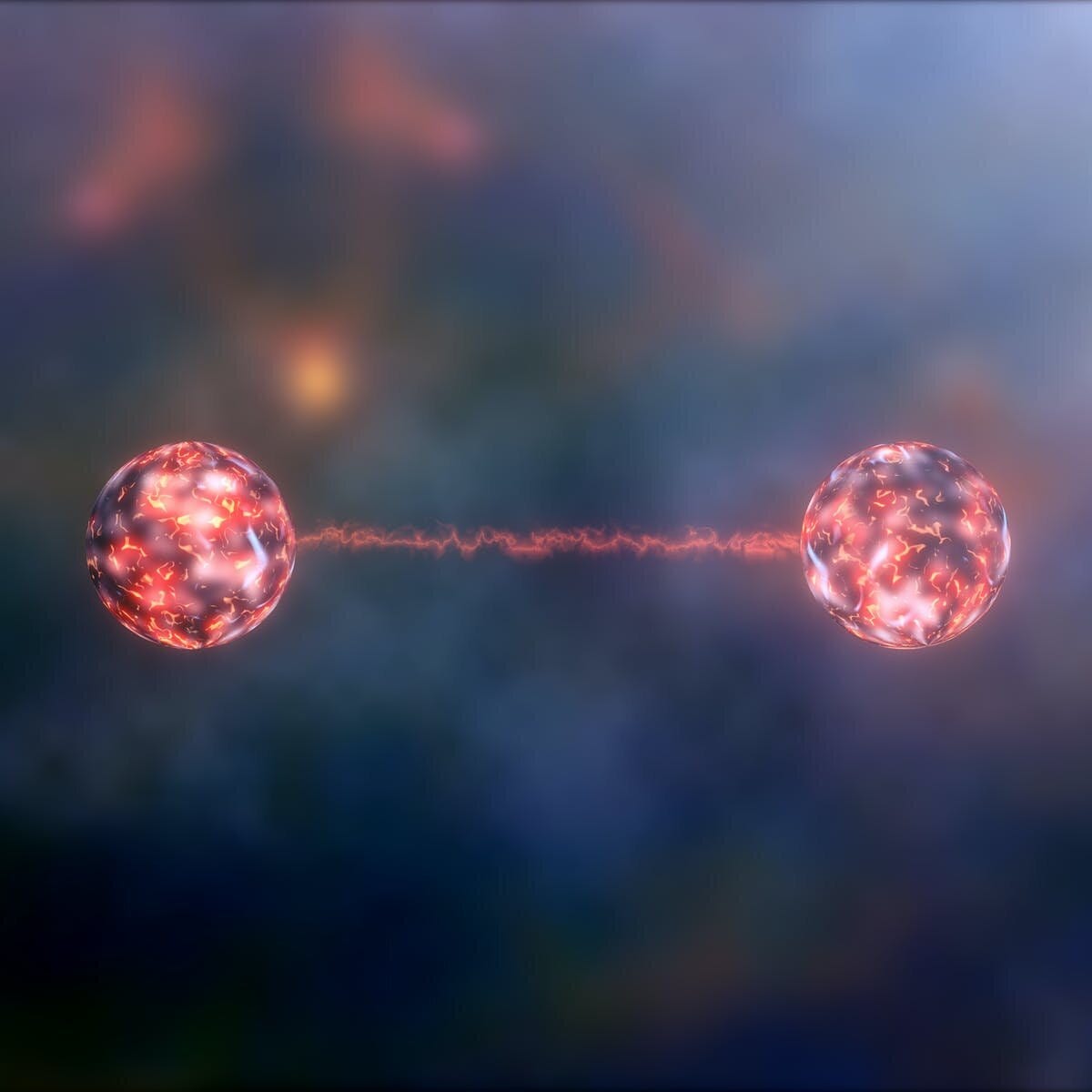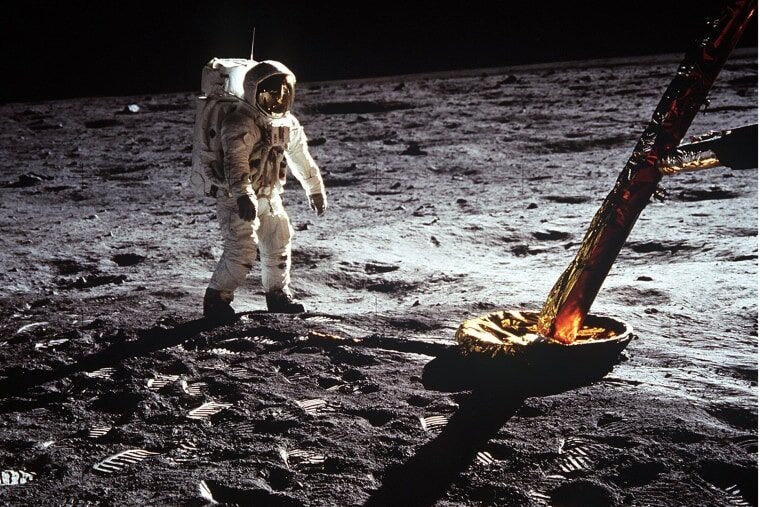A Multidimensional Universe (The Intriguing Vedic Universe, ch.3)
One of the keys to understanding the Vedic universe is to understand the idea of multidimensions. Different beings have different senses and see reality in different ways.
'The Intriguing Vedic Universe' was my first book on Vedic cosmology, explaining the mysterious universe described in the Srimad Bhagavatam. It describes not just the physical aspects, in a level of detail that rivals modern science, but also the metaphysical aspects, the missing aspect that is missing in the modern perspective.
Chapter 3: A Multidimensional Universe
One of the keys to understanding the model of the universe described in the Puranas is to understand the idea of multidimensions: Different beings have different sets of senses and thus can observe the universe in different ways. As mentioned, the model of the universe described in the Surya Siddhanta, as well as in our modern astronomy, is based on our sense perception, while the universe described in the Puranas is based on the perception of higher beings. The reason why this higher model of the universe is described is exactly to help us tune up with this subtler dimension, helping us to get free from our gross senses and intelligence.
That's why we have two models of the universe described in the Vedas: The model of the Surya Siddhanta (based on our sense perception) is used when one wants to understand practical aspects of the solar system, be able to calculate orbits of planets, eclipses, and so on, while the model given in the Puranas (based on the perception of higher beings) can help one to elevate one's consciousness.
While for us everything is very far away, separated by inconceivable distances we measure in thousands of light-years, for the Devas (as well as for advanced Asuras) everything is much closer and accessible. Devas can go from their planets to the Milk Ocean to pray for Ksirodakasayi Vishnu just like someone may go to India. Similarly, Asuras can cross the Universe to fight the demigods just like Napoleon crossed Europe to invade Russia. If we would try to reach other stars of the universe in a spaceship, this would take millions of years, but the Devas and Asuras can cover such vast distances quite quickly. Very advanced sages like Narada Muni can go even faster, going practically instantly from one extreme to the other of the Universe.
One explanation for how superior beings have such a different concept of space than we do is the existence of interplanetary pathways. It’s described, for example, that certain passages in the Himalayas connect our planet to the celestial planets, but only persons with a certain level of consciousness can access such passages. In the Mahabharata, for example, it is described how the Pandavas ascended to the place of Kuvera, the king of the Yakshas through one of these pathways.
For one who is able to cross these pathways, the other parts of Jambudvipa are just a walk away, and therefore the Srimad Bhagavatam describes these different interconnected fragments as a continuous area, which is exactly the perception of one who is traveling through them. In our sense perception, however, these different parts of the structure are spread through different planets.
This explains the huge dimensions of the geographical details of Jambudvipa described in the Srimad Bhagavatam. The enormous mountains and trees described there are not found on our planet (at least not in our gross dimension), but qualified people can access these geographical locations through these subtle passages.
For one who doesn't have the proper qualifications, however, the pathways are invisible, and he will be stuck on this planet. As a result, when he crosses the Himalayas he goes to China instead of the celestial planets.
We can better understand how this can be possible by a simple example. Imagine two tall buildings built beside each other:
Normally, to go from an apartment on the top of the first building to another on the top of the second, one would have to go all the way down and then all the way up, which could be a long way. If he had access to a walkway between the two buildings, he could go from one apartment to the other very easily. For him, the distance between the two apartments would be very short, while for other people, who had to take the long way, it would still be very far.
Similarly, a person who could use the pathway would have the perception that the two apartments form a continuous area instead of being part of two separate buildings. In the same way, the fact that the Devas can travel easily through the Universe makes their concept of space very different from ours.
The existence of connected objects that are far apart, as well as “shortcuts” that allow one to access places that are far away may sound like fantasy, but these ideas are also discussed in modern physics, with the phenomenon of quantum entanglement and the theory of the wormholes, for example.
According to modern theories, wormholes link separate points in spacetime, like a tunnel connecting two ends at separate points in time space and time.
In the theory of Quantum entanglement, discussed in modern physics, two particles can be linked together in a certain way so that their state remains the same, no matter how far apart they are in space.
Another concept given in the Puranas is the idea of a subtle vertical dimension. More than just a change in geographical location, to access higher planets one has to also change his consciousness, which can be done only by practicing a spiritual process of self-realization.
Not only other planets are very far from Earth, but even if one goes there, he will find only rocks, dust, poisonous gasses, and extremes of temperature, without the possibility of interacting with the local inhabitants, who will be living in a different dimension. For example, according to our tridimensional view of reality, measured by experimental methods, the moon is situated about 384,000 km from Earth, and one can reach it in about three days in a space probe. Unfortunately, if one goes there he will find only dust and rocks.
The Puranas, however, state that the moon is in reality a celestial planet, with a standard of living much superior to our planet. There, people live for 10,000 celestial years, drinking soma rasa in the company of celestial ladies. The question is that to access it one has to develop a very subtle consciousness, similar to the superior beings who live there. Without this change in consciousness, one may visit this piece of rock orbiting our planet that we call the Moon, but he will see only rocks. The celestial moon described in the Puranas will however remain inaccessible.
This can be explained with yet another example. Suppose you want to visit an office on the 82nd floor of a prestigious building in Manhattan. You may take a taxi and go to the front of the building, and this would bring you close to the office in the horizontal dimension. However, to finally reach it you would need to also travel in the vertical dimension, taking the elevator or the stairs and going up until you reach the right floor.
If somehow your credentials would not allow you to enter the building, you would be stuck in the street, which would not be as luxurious as the inside.
Where are the apsaras? I’m seeing only rocks...
Similarly, when a human being tries to go to the moon without the proper consciousness he will not be able to travel in the subtle vertical dimension and will thus be stuck in the gross dimension, where there is only dust and rocks. Our universe is composed of different dimensions and we can tune up in each one according to the particular set of senses we have, which is in turn determined by our level of consciousness.
Many discuss whether man really went to the moon or not. It actually depends on what one calls “the moon”. If we accept the moon as this piece of rock that is 384,000 km distant from Earth, then it's perfectly possible to go there on a spaceship, the point is that there will be nothing interesting to observe there. However, if we accept the moon as the celestial planet described in the Puranas, then it's possible to attain it only by mystical means.
The Puranas state that the celestial moon is actually very far from Earth in the subtle vertical dimension, even further away than the sun. To reach there, one has to radically change his level of consciousness. A space probe will not help.
The process to access the celestial moon involves not only changing one’s consciousness and thus traveling in the subtle vertical dimension but also acquiring a particular set of senses and a suitable body to live there. In the past, this was an art understood by yogis, who were able to travel through the Universe by elevating their consciousness and thus transferring themselves to the desired planet. Nowadays we try to do the same using probes and space suits, but the results are not the same.










Worlds are interconnected. Unbelievable how much.Hare Krishna🩷💛💚💙🩵💜🤎